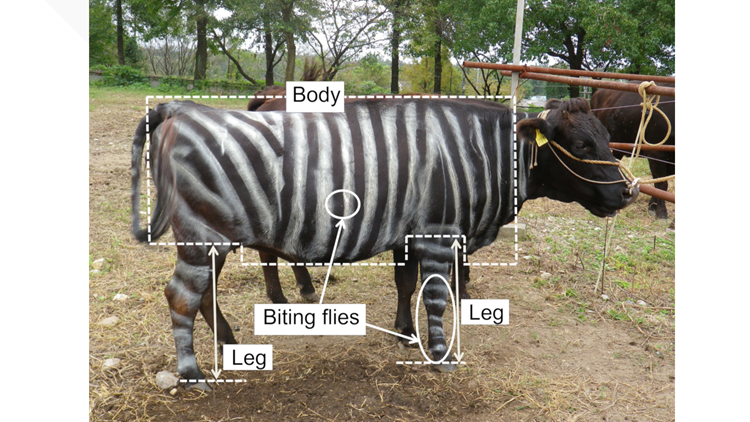WASHINGTON — A group of Japanese researchers found that painting stripes that mimic those found on zebras seems to dramatically reduce the amount of biting flies pestering livestock.
The findings, published in the journal PLOS ONE, saw the rate of "fly-repelling behaviors" in the six Japanese black cows that were studied, drop by about 20% when they were painted with the white stripes, which was seen as a significant reduction.
The fly-repelling behaviors that the study refers to are "head throw, ear beat, leg stamp, skin twitch, and tail flick." These behaviors were how the researchers measured the rate at which biting flies were pestering the cows.

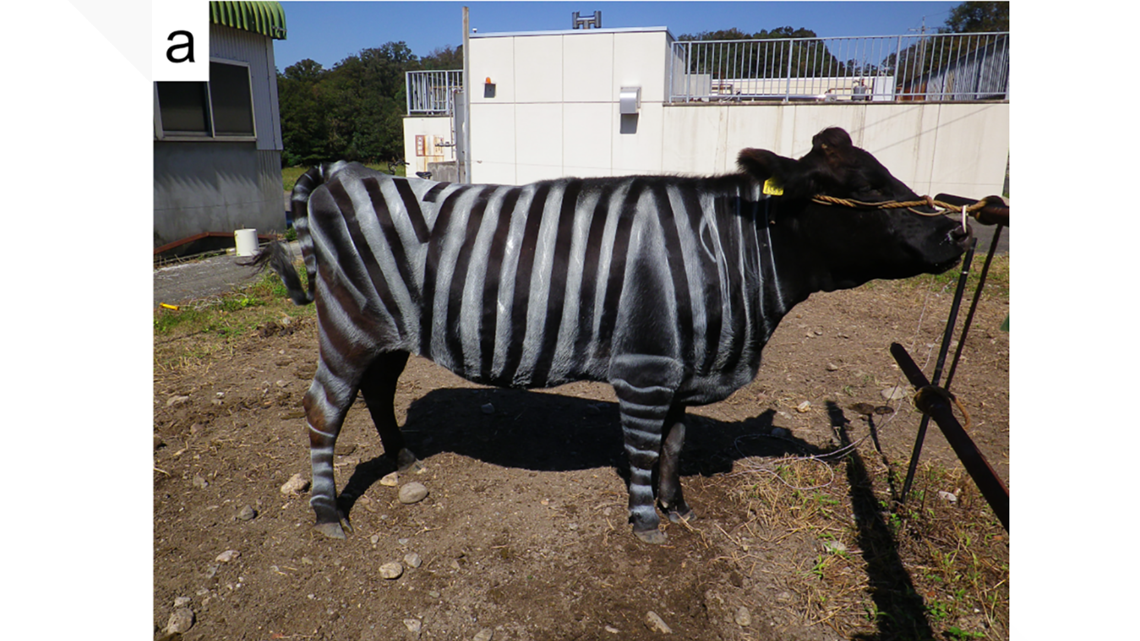
The researchers suggest that their aim in the study was to find a way to reduce proven economic losses in raising live stock caused by pests such as biting flies. The USDA has found that stable flies are "among the most damaging arthropod pests of cattle worldwide." The agency has seen millions of dollars in economic losses for U.S. cattle production because of infestations.

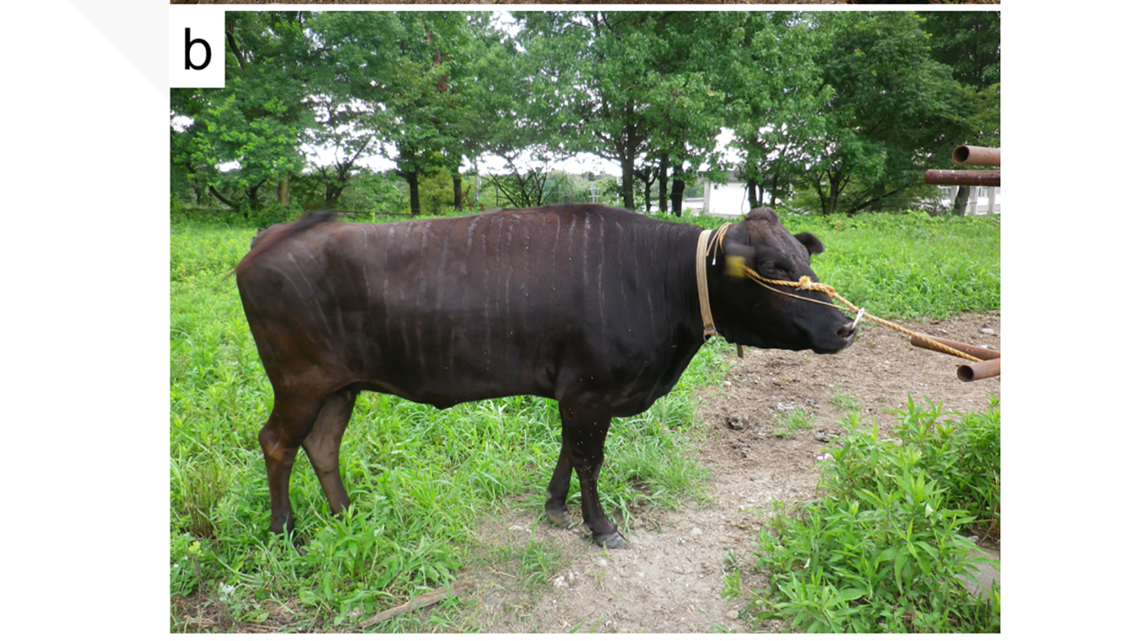
Researchers in the study hypothesized that the black cows painted with white stripes seemed to "avoid biting fly attacks" and they saw a decrease in those fly-repelling behaviors listed.
The theory is that the zebra-like stripes seem to scramble the pests internal flight radar or motion detection system that determines how they land on the cow's body.

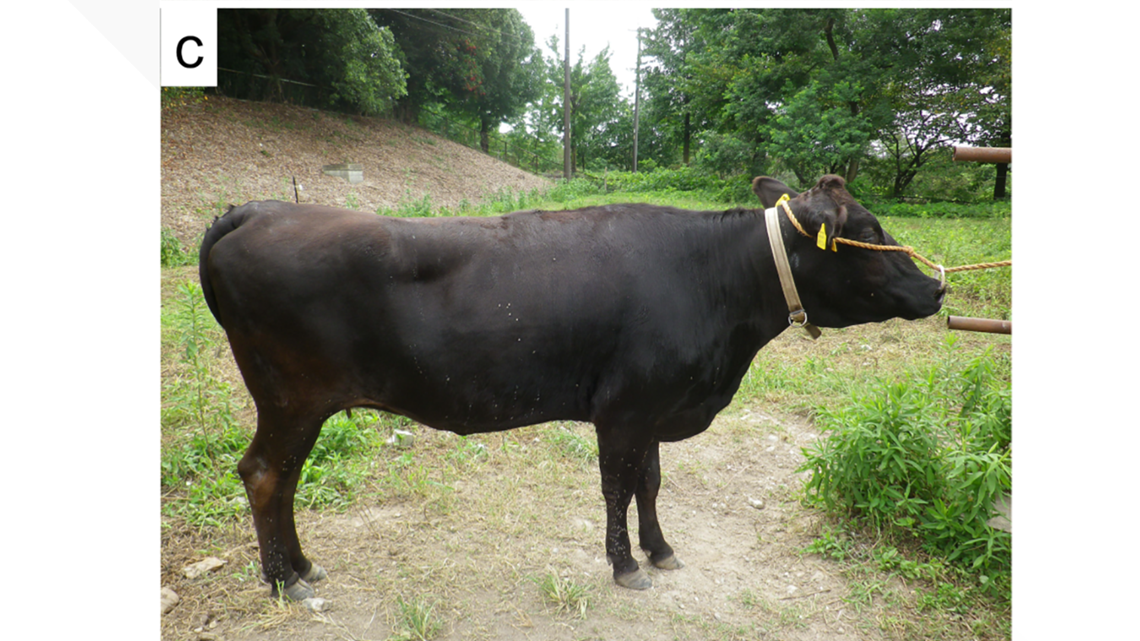

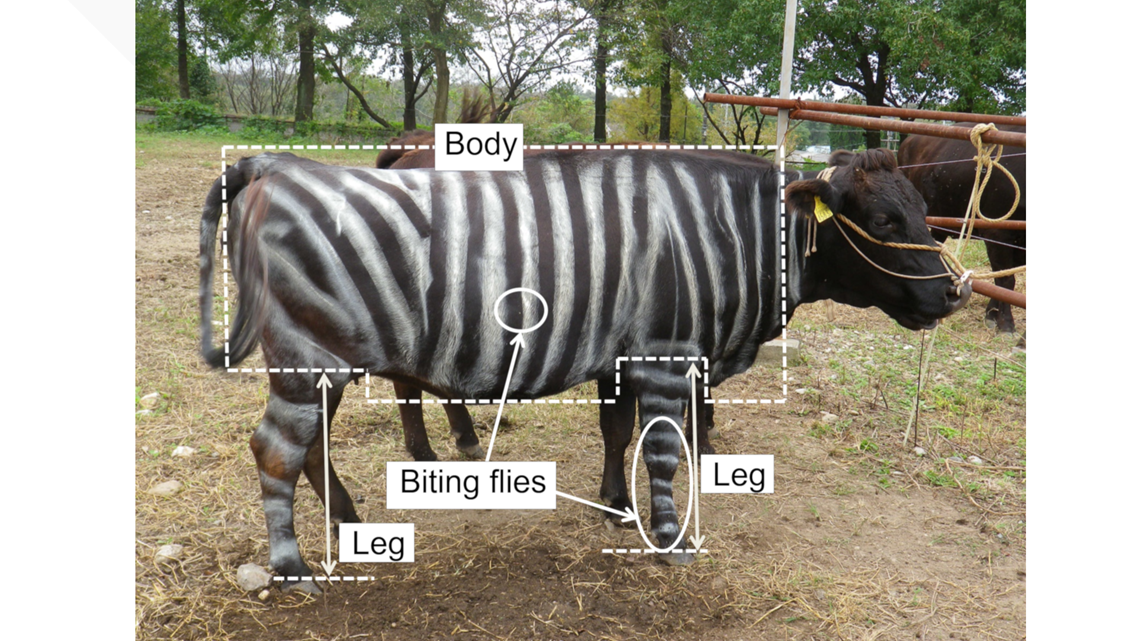
As a control, researchers even painted the black cows with black stripes, presumably to cross out any questions regarding the chemicals in the paint and if that might be a part of why the biting flies seemed to like the cows less when painted with stripes.
The study suggests that this could potentially become an environmentally friendly, pesticide-free alternative to controlling biting flies in animal production.
This isn't the first time livestock and wild animals have been studied to see how pests can be controlled. In August, Science Magazine published a report released by the Ecological Society of America. The report found that even though cattle ranching and biodiversity conservation on African savannas were seen as conflicting uses of the land, when livestock and wildlife used the same lands in a study in central Kenya, the amount of pests, such as ticks, went down.

